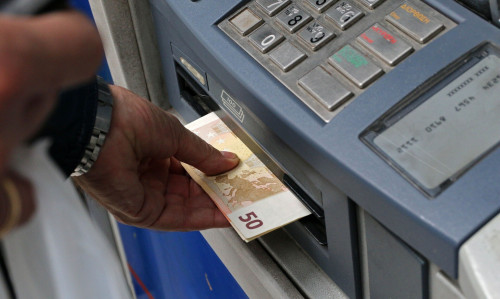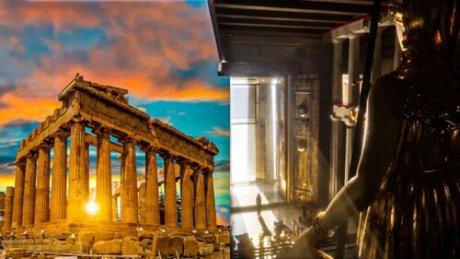Amphipolis: Important new findings
The excavations on the Kasta hill in Amphipolis, by the KH Department of Prehistoric and Classical Antiquities, continue unabated.

The three predominant scenarios
According to the article in the newspaper "Ethnos", the prevailing scenarios for the outcome of the excavation are three.
The "worst case scenario": the tomb has been looted by grave robbers, who took the valuables, urns and vases of excavation and among them probably the case with the bones of the dead.
In this scenario, the identity of the deceased will be disclosed with great difficulty. If, however, it will never reveal, then the assumptions concerning the identity of the dead will be numerous.
The second scenario, according to the article, is the valuables to have been looted but to be found bones, coins and pottery, from which will be revealed the gender and age of the deceased.
Archaeologists identify elements which give them their own information. Despite any difficulties it is very possible to have successful result.
The third and final scenario is the most optimistic and desirable. The robbers have not been able to enter the tomb and all findings have remained in place.
The excavations continue
Following the removal of soil from the vestibule, the space behind the wall of the Sphinxes, revealed part of a marble floor, with white, small irregular fragments of marble, on red background, preserved in excellent condition. At the threshold of the first wall of the Sphinxes, was found a fresco with traces of blue color.
Also, it was found that in all three rooms, after sealing the wall, there is loose sandy embankment, until the maximum height of the dome. The three rooms, created by the construction of the transverse walls along the dome seem that were filled with soil by the sealing of the burial monument. The walls partly function as retaining elements of weak embankments. Both the vacuum seal on the outer wall and the holes in the next panels, which may have come from removing stones or non installation of stones, appears to be part of the sealing plan of the tomb.
The three rooms along the dome is another special feature of the monument, which was revealed to the hill of Kasta.
The first wall, after the entrance, has disclosed only until the Ionic architrave, which is decorated with embossed rosettes. In the extreme eastern part of the architrave appeared the upper part of the side jamb. Also, it was found that is missing the extreme western part of the architrave, and the overlying in this stone. As is already reported on the wall will be the entrance, which leads to the second room of the monument. The formation of the entry will be revealed after the removal of soil, within the next few days.
Technical work
At the same time, along with the progress of the excavation work, are carried out technical work for shielding the monument and the wider area, from unexpected weather conditions.
To protect the monument from the rain, except for the construction of the shelter which was completed, began the configuration of runoff conductors of rainwater, around the monument.
For the removal of loose sand embankments, required structural engineering and geotechnical study which includes:
• Full construction of cofferdams with wooden elements.
• Configuration of "lofts", which allow the support of the dome, creating an appropriate splint for the smooth access from room to room and the safe implementation of the removal of the soil.
• Strong bracing of the second room, to address the strong push from the land of the next room.
• External bracing of the entry with the Sphinxes, for the safety of the rooms and tailstocks works that may be required during the progress of the excavation work.











.jpg)








.jpg)



Ο σχολιασμός είναι απενεργοποιημένος